Story and photos by Hugues Vanhoolandt
We begin with a wonderful story from the superb collection of Tatras at Retromobile.
In 1947, two young Czech adventurers, Jiri Hanzelka and Miroslav Zikmund, had a plan to see the world and report their findings to the world through films, radio, and books. They approached Tatra with the idea. Impressed by the plan and the opportunity to promote its vehicles, Tatra provided the team with the Tatra Type 87 seen above. They didn’t just hand over the keys however. Hanzelka and Zikmund had three months of experience with the car at the Tatra factory in Koprivnice before embarking upon a continuous three-and-a-half-year voyage through Africa and Latin America, covering 44 countries and 111,000 kilometers. Along the way, they made films, wrote articles, and they even had a broadcast on the Czech radios as they traveled by Tatra to see the world. Truly happy campers! But while they were away, the Communists, with the support of Stalin, took control of Czechoslovakia, beginning one of the bleakest eras of the country’s history.
Initially, the government treated Hanzelka and Zikmund well; though most Czechs were barred from going abroad, they were allowed to publish books about their travels because their descriptions were not seen as politically threatening. Since their countrymen couldn’t travel, Hanzelka and Zikmund became the eyes of the world for the Czech people. In 1950, the two adventurers returned home, under the strict control of the new regime, but the media success protected them. According to Wiki, “They were able to launch a second trip, from 1959 to 1964 taking them to Eastern Europe, Asia, and various Pacific islands with two prototypes of the Tatra 805 truck.” They became the best-selling writers of twentieth-century Eastern Europe; their books sold 6,525,000 copies in the Soviet Bloc and were translated into eleven languages. Millions of people behind the Iron Curtain saw the world thanks to Tatra and the adventurous duo. Jiri Hanzelka died in 2003; Miroslav Zikmund has just reached 101 years last December. We have been told, however, that the Tatra T87 on display is not the actual car that took part in the post war adventure. (See comments below.)
The Tatra was just part of this year’s Rétromobile’s superb collection of Tatras, made possible due to a collaboration with the Tatra Museum of Koprivnice in the Czech Republic, the Manoir de l’Automobile in Loheac, France, and the Czech specialist of the Tatra make Ecorra. We present the collection in full below.
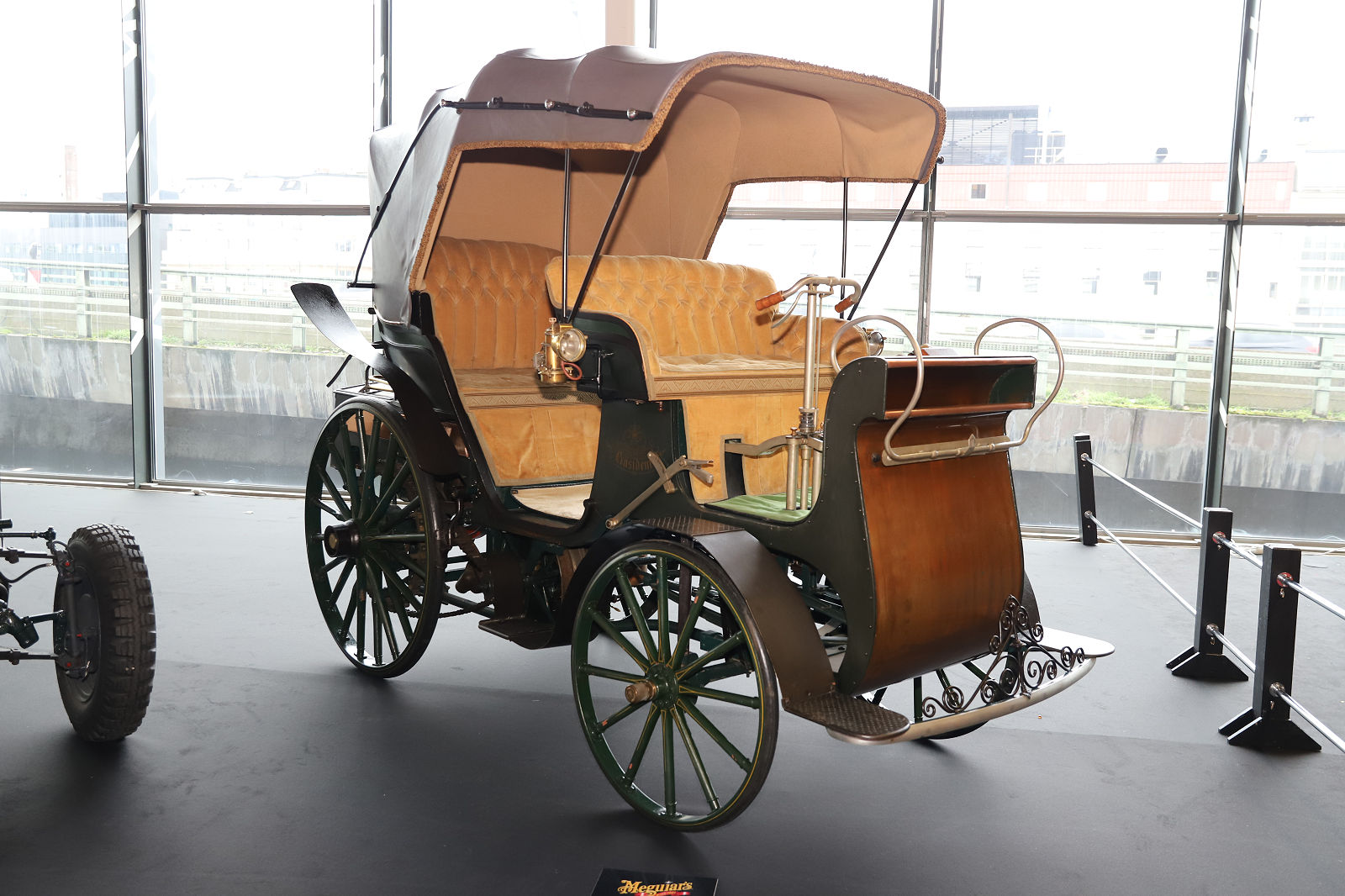
This is a replica of the 1897 Tatra President, equipped with a 5hp 2.7 liter 2 flat cylinder Benz engine, placed at the back. The original car is at the National Technical Museum of Prague.
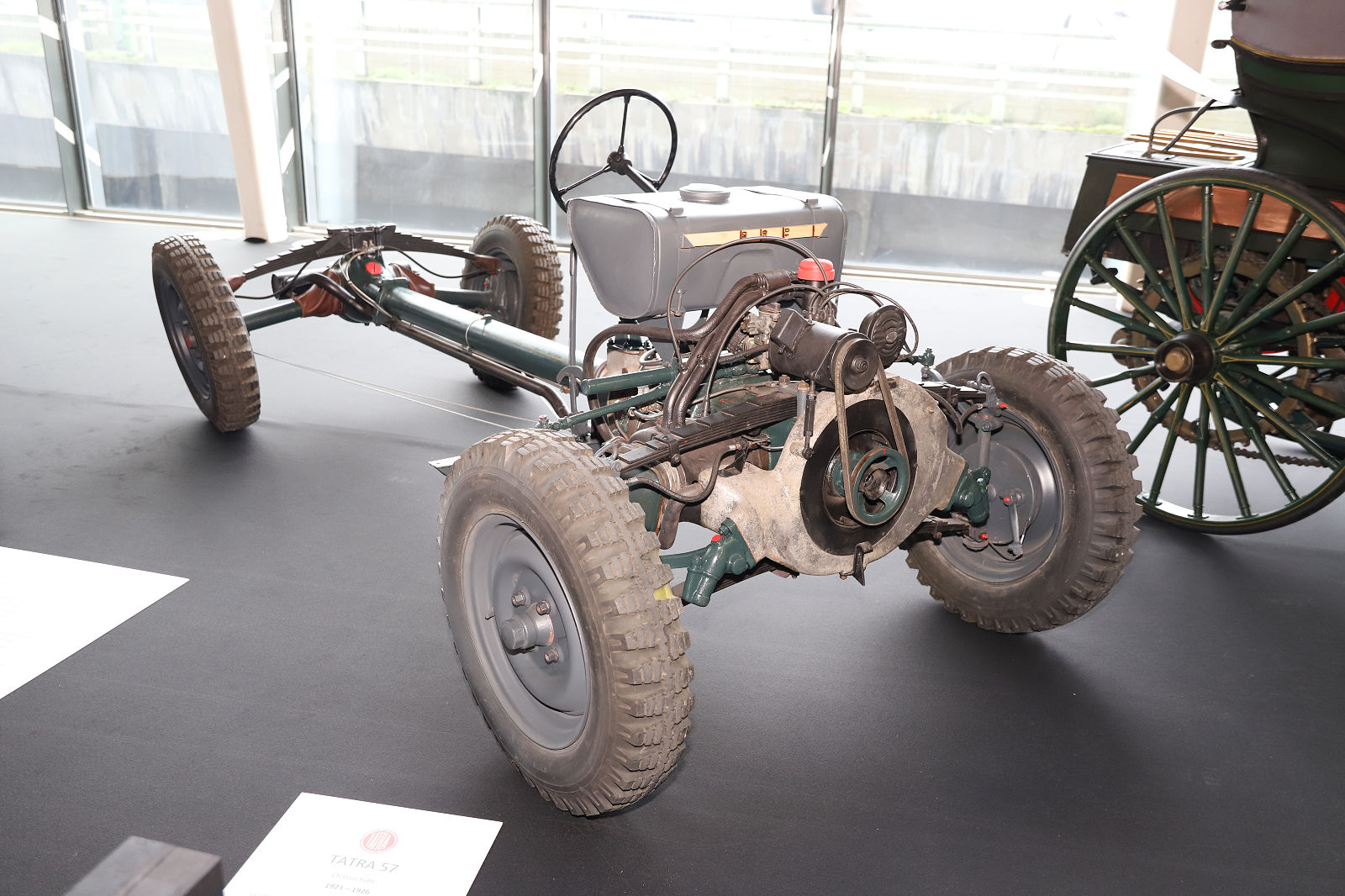
1923-26 Tatra 57 chassis tube : the body was fixed on this chassis tube through which goes the transmission system. This principle, conceived at Tatra in 1920, continues to be applied on the trucks still built today.

Built from 1923 to 1926, the Tatra 11 was the first Tatra with an air cooled motor. The 1 liter V2 (not a v, a flat twin) engine was placed at the front and the body was fixed on the tube chassis we have seen before.
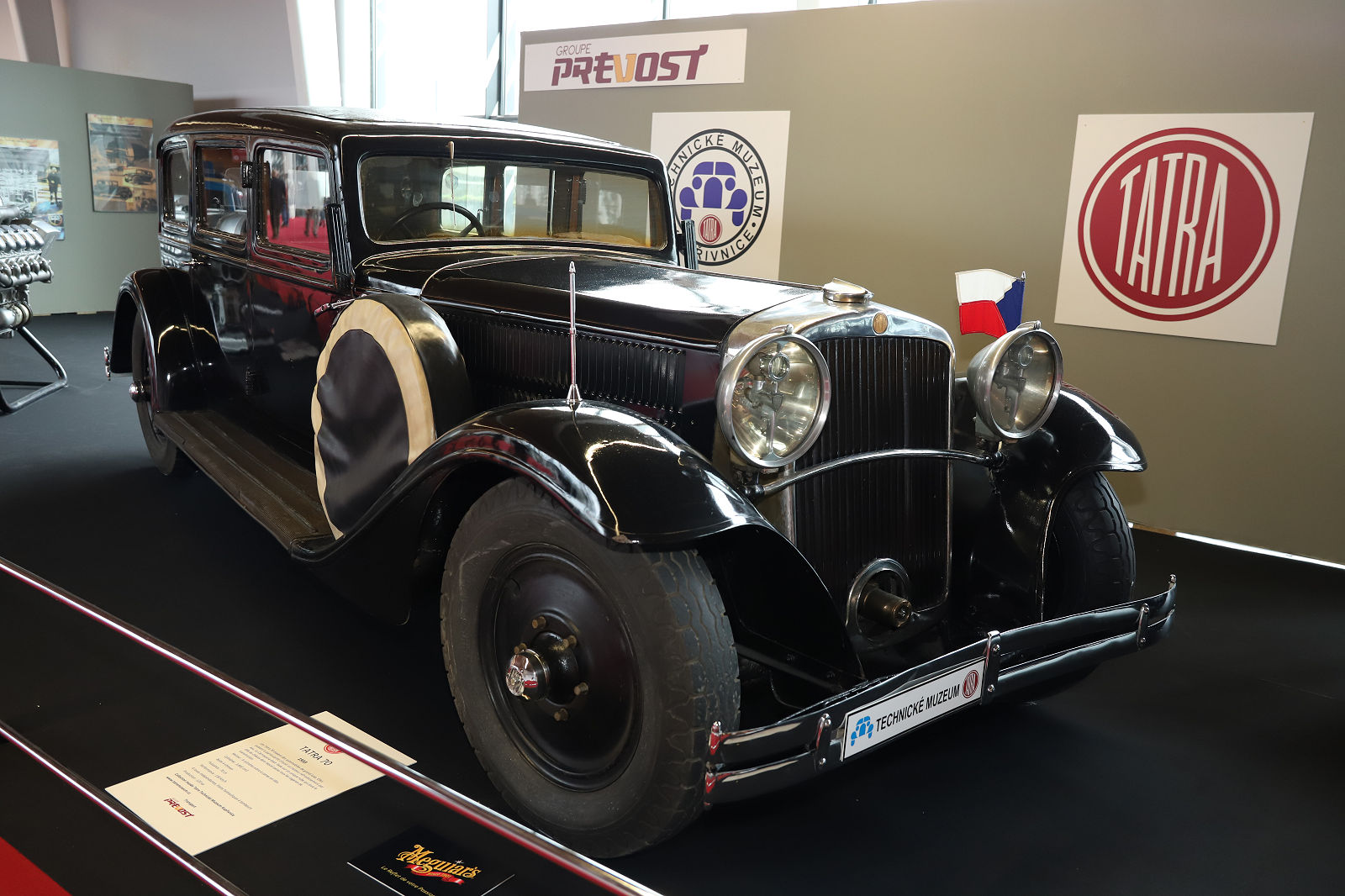
The 1933 Tatra 70 was an expensive car and only 120 units were built. The 6 cylinder 3.8 liter engine was water cooled.

In 1942, the Tatra 111 truck was equipped for the first time with a V12 15 liter air cooled engine similar to this. Since then, many derivatives were conceived with 8, 10 and 12 cylinders, naturally aspirated or turbocharged.

This unique prototype, the 1933 Tatra V 570, surely inspired Ferdinand Porsche for the Volkswagen project. (Or did it? Read comments below.) The flat twin, 854 cc, air cooled engine was placed at the back and the bodywork was mounted on a wooden structure fixed on a steel platform.

Built between 1933 and 1935, the Tatra 77 was powered by an air cooled V8 aluminum engine of 3 liters capacity developing 60 bhp, placed at the back.

As with the V 570, the bodywork was mounted on a wooden structure fixed on a steel platform. Only 101 examples were built.

The Tatra 87, produced between 1937 and 1950, had a monocoque body and an engine now developing 75 bhp so that it could reach 160 km/h. 3023 examples were built.

After the war, Tatra worked on a new car, the 600, called Tatraplan in reference to the planning of the economy in application in the socialist countries at the time.
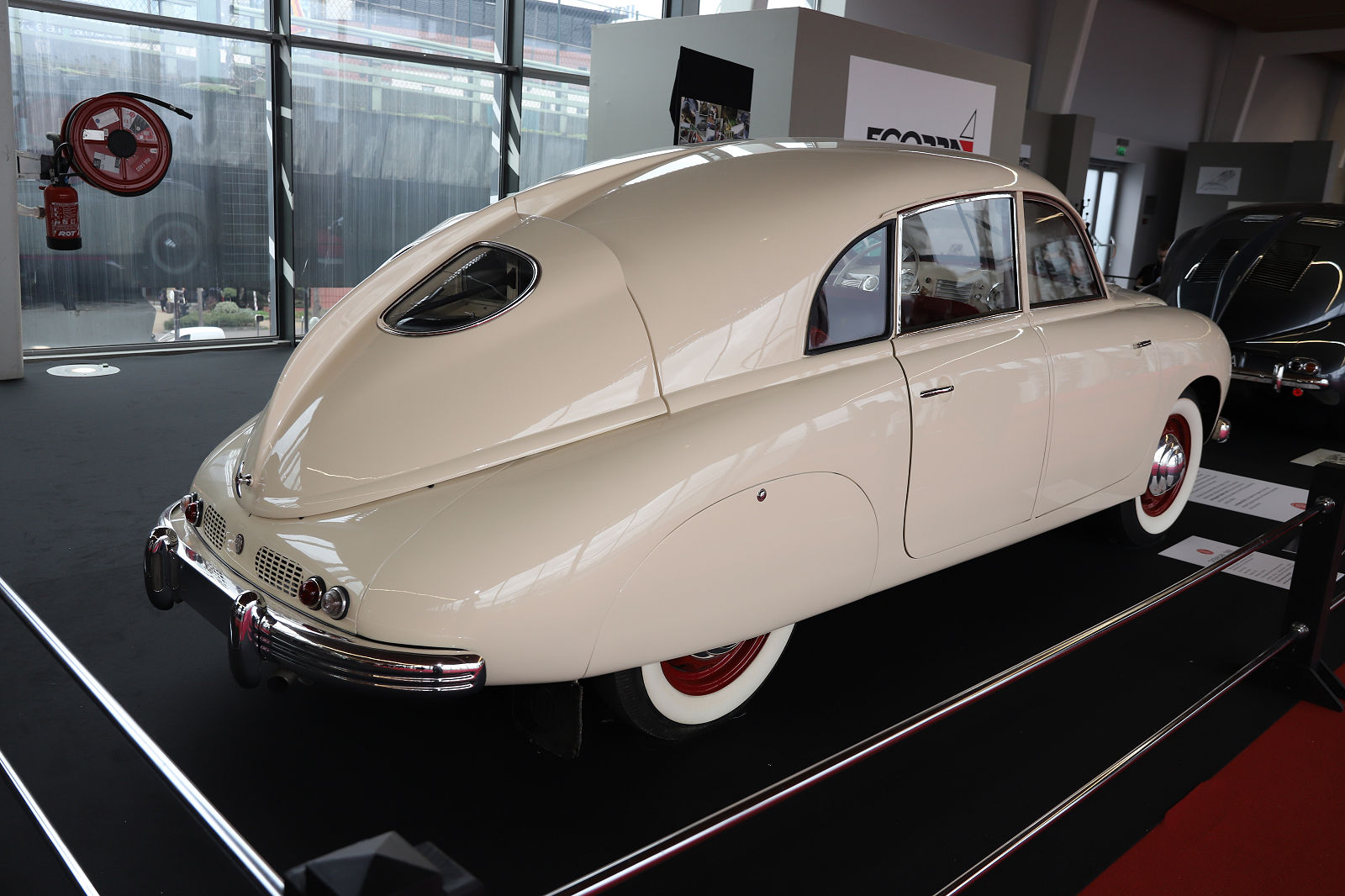
Its two liter four cylinders air cooled engine developed 52 hp and the car could reach 140 km/h. The production reached 6342 units when it ceased in 1951.

The Tatra 603 1st series, built between 1956 and 1962, had an aluminum V8 2.5 liter 95 hp engine, still placed at the back.
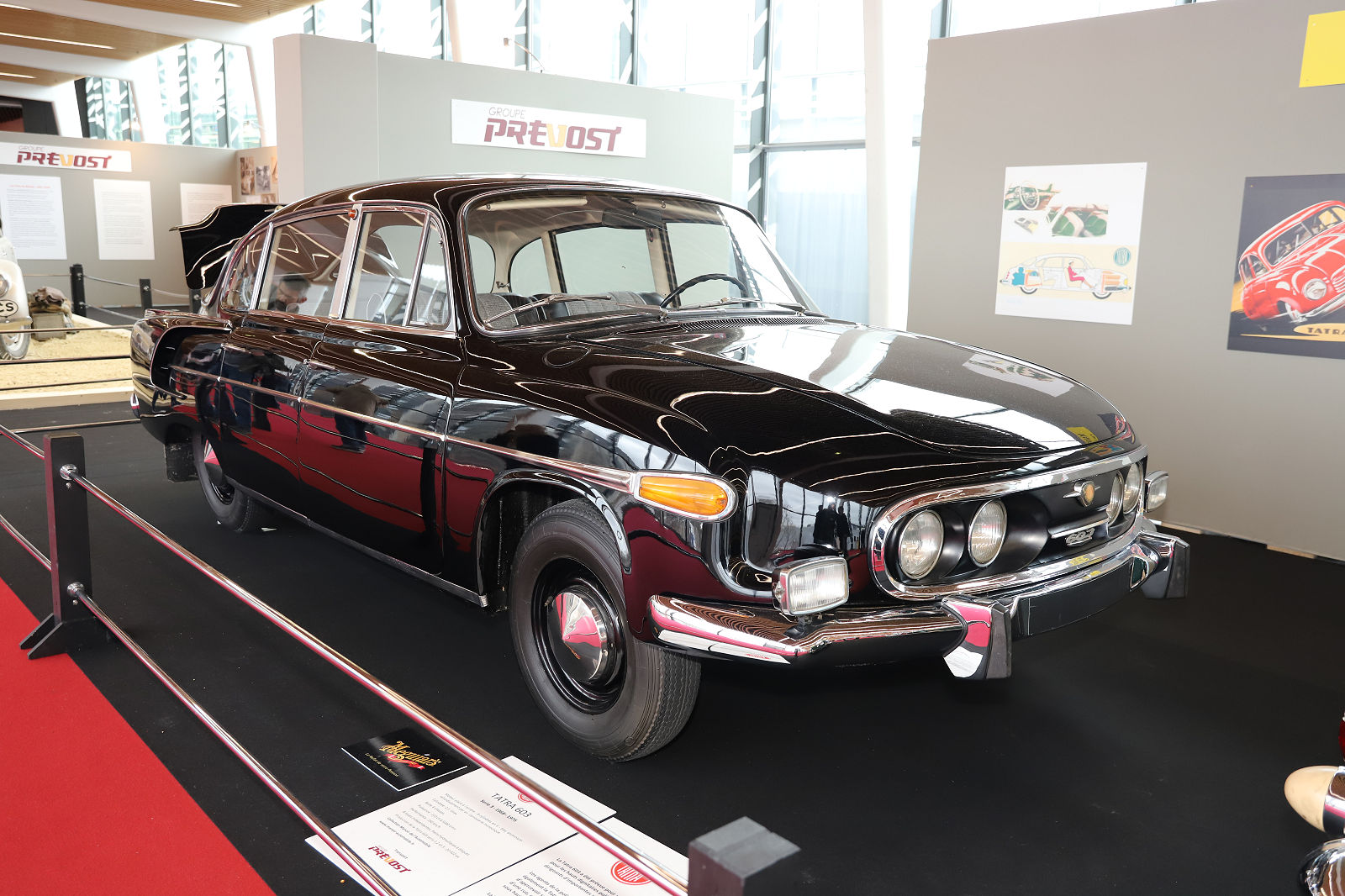
The Tatra 603 3rd series was intended for high political dignitaries and leaders of important State companies. It was also used by the agents of the political police so it was not reassuring to see this long black shape around the corner.

Produced from 1973, the Tatra 613 body was designed by Vignale some years before. The lines are now more angular and the car was produced over a long period, until 1995.
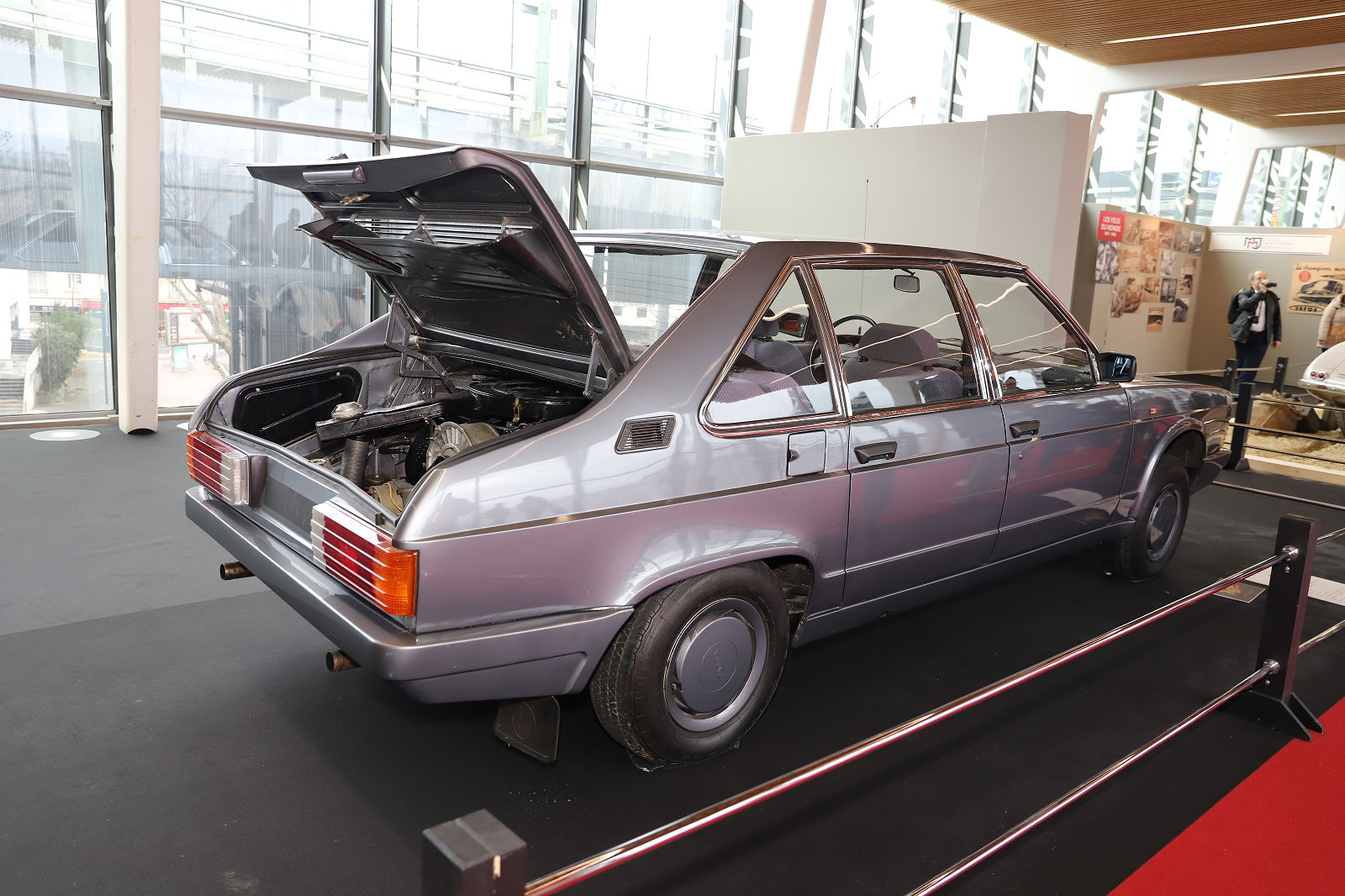
The aluminum V8 had a capacity of 3.5 liter and a power of 165 hp so that the car could reach 180 km/h.



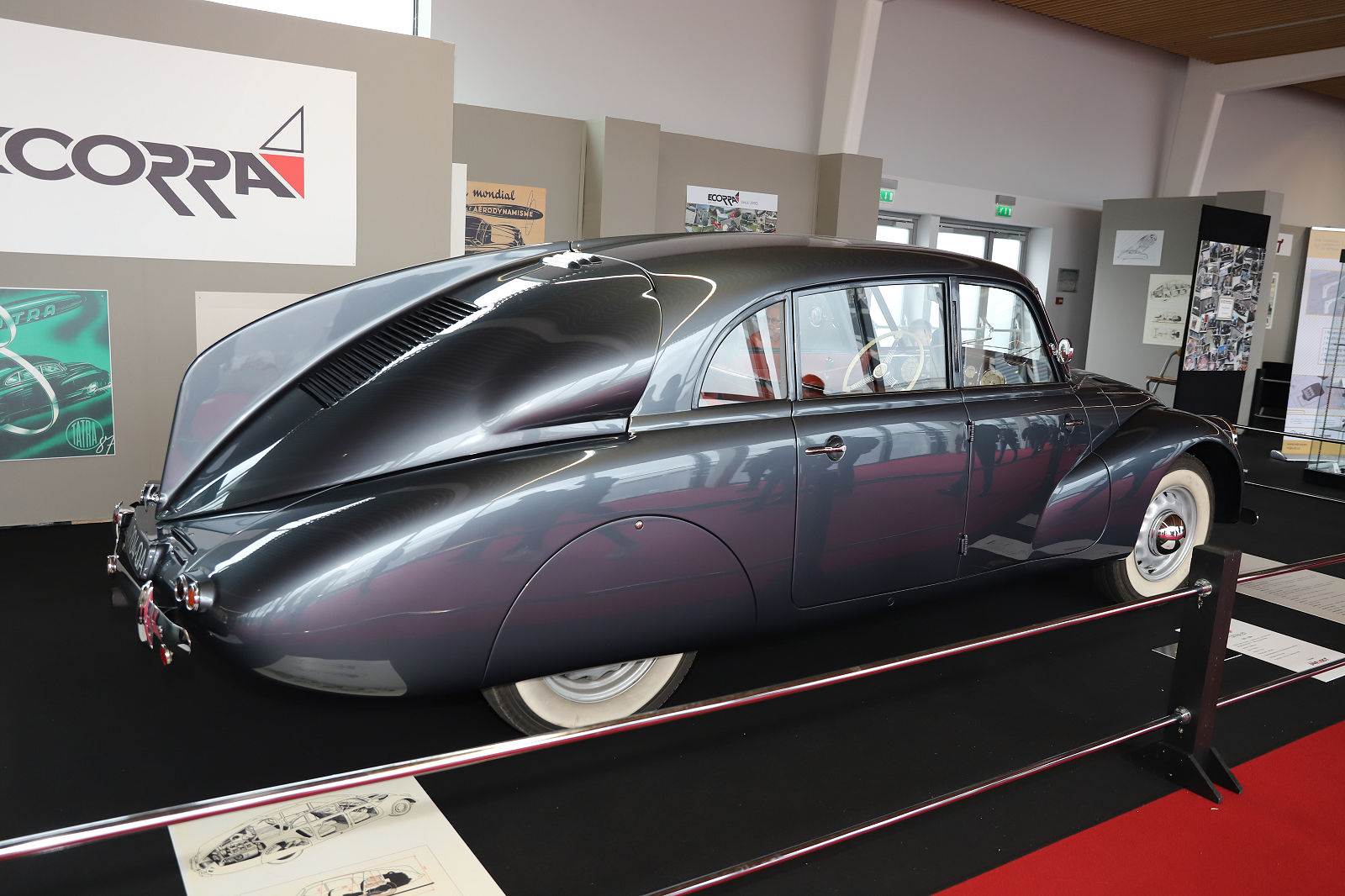



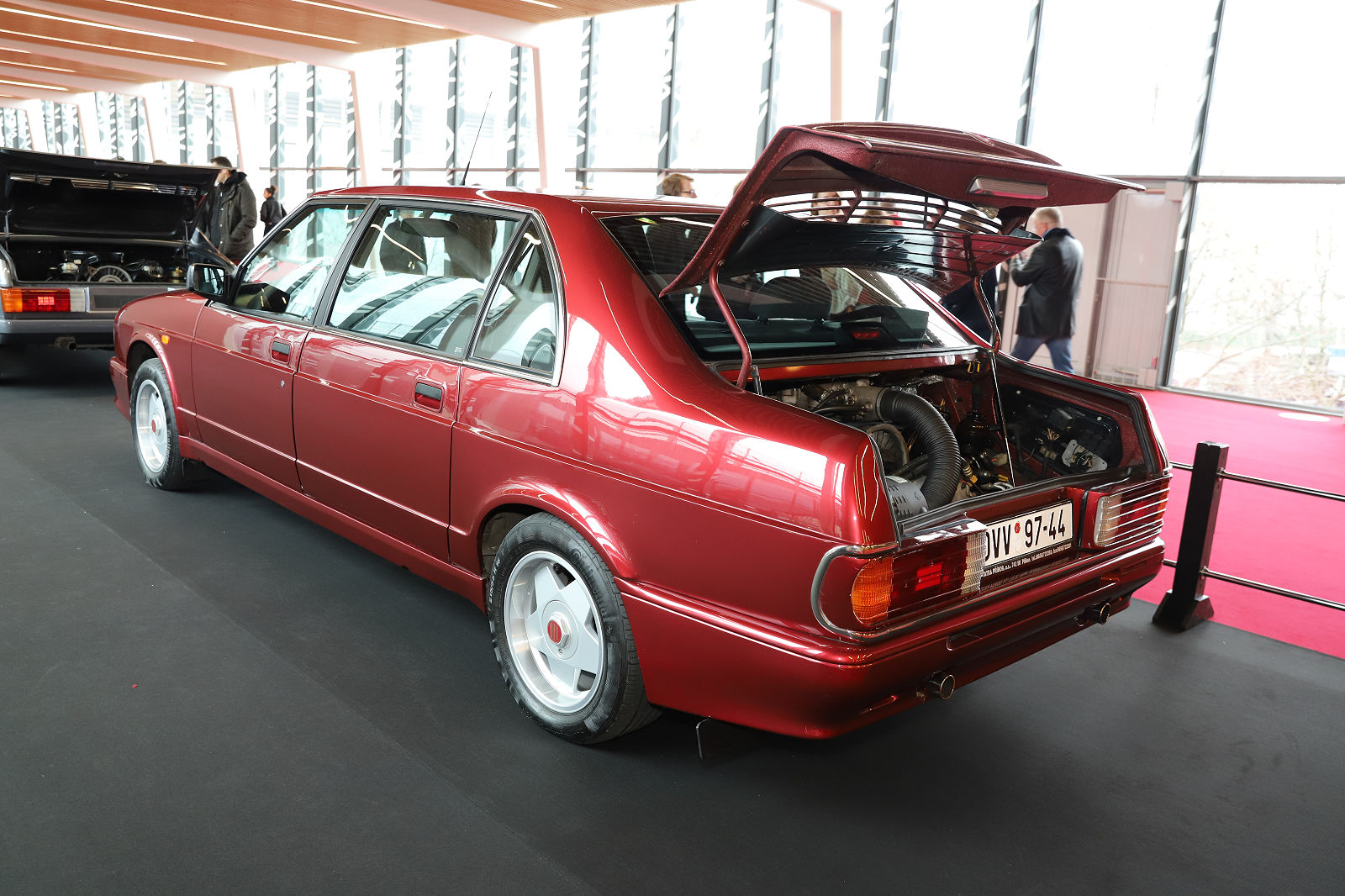
Question? How can an article on Tatra not mention Hans Ledwinka who, from 1905, created the Tatra revolution. I don’t mean to sound too critical, but not to mention Ledwinka’s Tatra contributions is gross oversight.
Hey Steve, if we did a piece on the Volkwagen are we compelled to mention that it was designed by Ferdinand Porsche? I think not, at least for our readers, who in large part are smarter and know more than the editor. Besides, we have totally covered the efforts of Ledwinka in two major VT stories in past:
https://velocetoday.com/the-tatra-type-87/
https://velocetoday.com/a-technical-history-of-tatra/
So to bring up poor old Hans again seems at the very least redundant.
Pete
There is a nice collection of Tatras in the Tampa Automoble Museum in Florida.
My Czech neighbour confirms that if a Tatra 603 parked in front of your house you new you were in trouble !
Good pics of a splendid stand, a credit to my friends and acquaintances who put it all together. The T11 has a flat-twin engine, btw, not a ‘V’, and the T87 in its desert re-creation wasn’t a car actually campaigned by Zikmund and Hanzelka, but a similar car owned by Rétromobile’s Director. More importantly, though, this little report repeats the common – these days almost universal – misconception of presenting the small V 570 prototype of 1933 as a historic inspiration for Porsche’s KdF Beetle project, which just doesn’t fit the timelines. Why would the talented Dr have found it necessary to lift anything from this undeveloped and un-pursued experimental 2-cylinder 1933 one-off, with its heavy central tube chassis and fairly crude timber-framed superstructure, when he already had a better back catalogue of his own with more sophisticated multi-cylinder prototypes for Zündapp, his Type 12 designed in 1931, and his Type 32 for NSU drawn up a year later …both much better resolved than the Tatra that was little more than a T11 back-to-front with two cylinders removed? In any case, Porsche’s successor at Mercedes-Benz was Hans Nibel who, with Max Wagner had already worked up the neat Flat-4 rear-engined 120H prototype with attractive compound curves, that emerged in 1931 and led to the 130 and 170H production cars. Porsche will not have been unaware of that, and had no need to look outside Germany. Sadly, most of what everyone reads has left this obvious chronology unacknowledged – a combination of brand and national tribalism, and unsupportable historic revisionism that, once in print and on the Internet, just can’t be corrected. And it’s relentless, with plenty of Tatra owners happily signed up to the mythology. Even The production Tatra T97 is regularly referenced as another Beetle precursor, despite work having started no earlier than 1936 and the car being largely hand-made, with timber-framed doors and costing over five times the KdF’s target price …the very opposite of a ‘people’s car’. And its production, btw, wasn’t ‘halted by the Nazis’ as only a 500-units were ever planned and signed off. I find myself making these points year after year …the only road-registered T97 in the UK belongs to me, one of the six Tatras I’ve owned, three of which I still run. Of only 508 to 510 produced, depending on who you believe, an astonishing 46, possibly even more, have somehow survived, and ours has taken us on five European adventures as well as extensive touring here at home.
Ian Tisdale’s comments really need to be read, otherwise the article has unforgivable mistakes and just compounds rumour and half-truths which we don’t expect from this source.
Paul, Ian,
Thanks for your most valuable input. I have corrected and made note of the comments in the text. By adding explanations instead of simply deleting the errors, readers will be able to more easily understand (the original errors) and what is being discussed in the comments section.
Pete
Pete,
In fairness to so many who struggle with this topic I should concede that Tatra history is a minefield, and it’s entirely possible unwittingly to pick up what appears to be credible information from long-respected sources that give every impression of being reliable. Once something’s in print or on the ‘net it becomes immortal. People do their very best to compose an entertaining summary without realising that they’re unwittingly propagating misinformation. The same fate has befallen the reporting of this Rétromobile display on the Goodwood Road and Racing Facebook page, by someone I know and even met before and during the event: https://www.facebook.com/GoodwoodRRC/posts/3089980544345591
It’s not unique to Tatra, but this marque has been particularly burdened with tribal and nationalist cheer-leading, not unlike football support, so instead of celebrating the delightful products in a scholarly manner we’re told that they were the work of genius that they paved the way for today’s cars, that they were the source of Porsche’s KdF concept, the first serially-produced streamliners, the origin of the single-tube backbone chassis, and even sometimes of swing-axle independent rear suspension, none of which is true. Much of what’s been posted on Wiki is just churning the mythology. The T77’s rear-engine is often said to make a transmission tunnel unnecessary, yet there’s an enormous box-section central spine that just happens not to contain a propshaft, and the oil coolers are high over the engine, not at the front like subsequent Tatra streaminers. The engine isn’t above the rear axle-line but behind it like most pushers …a confusion with the Stout Scarab or Tatra’s own 1973 T613. Wiki does have one good paragraph – a description of the T77’s unique engine – but, my only contribution, it’s the exception that proves the rule! Maybe I ought to suggest that this excellent eJournal could use a corrective Tatra feature, because there are plenty more misconceptions that need straightening out? Anyway, keep up the good work!